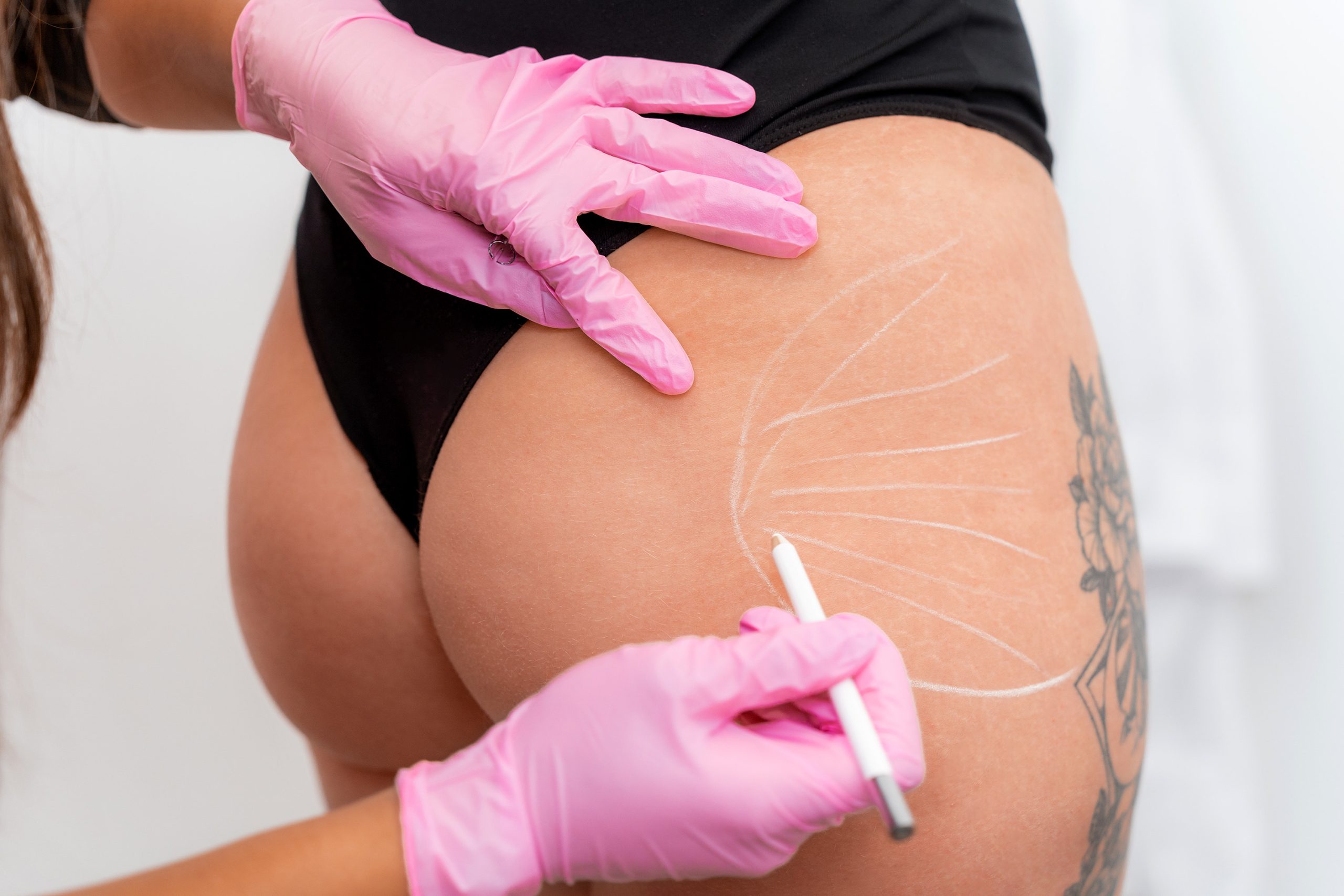
The allure of achieving a contoured and lifted posterior without undergoing the rigors of general anesthesia and prolonged surgical recovery has fueled a significant surge in the popularity of non-invasive butt lift procedures. This burgeoning corner of aesthetic medicine, often utilizing injectables like poly-L-lactic acid (Sculptra) or calcium hydroxyapatite (Radiesse), or muscle-stimulating devices like Emsculpt, presents a compelling alternative to the traditional, complex Brazilian Butt Lift (BBL) surgery. Yet, with this rapid growth in interest and marketing inevitably comes a thicket of misconceptions that distort the true capabilities and limitations of these non-surgical techniques. The public narrative is frequently clouded by oversimplified comparisons to surgery and an almost magical expectation of permanent, dramatic, and instantaneous transformation. Disentangling the reality from the aggressive promotional claims is essential for any patient considering this approach, as the non-surgical route has a distinct profile of results, longevity, and necessary commitment that fundamentally differs from its surgical counterpart.
The public narrative is frequently clouded by oversimplified comparisons to surgery
One of the most pervasive fables circulating in both digital forums and casual conversations is the notion that non-surgical treatments can flawlessly replicate the volume and shape changes achievable through a surgical BBL. This is a crucial area of misalignment between patient expectation and clinical reality. A traditional BBL involves harvesting a significant volume of a patient’s own autologous fat, often several hundred cubic centimeters, via liposuction from other areas of the body, and strategically transferring it to the buttocks. This technique allows for major, three-dimensional sculpting and dramatic volume addition, fundamentally reshaping the gluteal area and the surrounding contours. In stark contrast, non-surgical methods, particularly those involving injectable biostimulators, are primarily focused on subtle to moderate volume enhancement rather than dramatic changes. They work by gradually stimulating the body’s natural collagen production over several months, resulting in a more modest, yet significant, improvement in projection and contour. The sheer volume that can be safely and effectively administered non-surgically, and the resultant degree of tissue movement, cannot match the structural reconfiguration afforded by a surgical fat transfer procedure. These are methods for refinement and gradual augmentation, not for wholesale transformation.
subtle to moderate volume enhancement rather than dramatic changes
There is a widespread, yet incorrect, belief that because these injectable fillers promote the body’s own collagen growth, the results are somehow permanent, granting a one-time solution. This myth fundamentally misunderstands the body’s biological processes and the nature of the materials used. Injectables like Sculptra utilize poly-L-lactic acid microparticles that, once injected, act as scaffolding to provoke a fibrotic response, encouraging the formation of new collagen. However, this newly formed collagen, like all collagen in the body, is subject to the natural processes of aging and degradation. The effects of biostimulators and dermal fillers are emphatically not permanent; instead, they are characterized by their longevity, often lasting anywhere from one to two years, and occasionally longer, depending on the specific product, the patient’s metabolism, and lifestyle factors. To maintain the initial enhancement, patients must commit to a schedule of repeat treatments, often yearly or every other year. This recurring investment in both time and finance is a significant aspect of the non-surgical route that is often downplayed in promotional materials, and prospective patients must grasp that ongoing maintenance sessions are an inherent requirement.
not permanent
The idea that non-invasive treatments are inherently less risky than surgery because they involve no incisions or general anesthesia often fosters a false sense of absolute safety, overlooking the potential for serious complications that are unique to injectables. While it is certainly true that the overall morbidity and mortality rates associated with non-surgical treatments are dramatically lower than those linked to the more complex BBL surgery, which carries specific and serious risks related to fat embolism, the non-surgical route is not without hazard. Injectable treatments require profound anatomical knowledge; when performed by an unqualified individual or with incorrect technique, even routine treatments can lead to severe adverse events. Common, temporary side effects include swelling, bruising, and tenderness at the injection sites. More concerning, though rare, complications involve filler migration, or vascular occlusion, which can occur if the material is inadvertently injected into a blood vessel. Such an event, which is an emergency, underscores the reality that any procedure involving deep tissue injection carries risks that necessitate choosing an experienced, board-certified practitioner working in a medically safe environment. The perception of non-invasiveness does not translate to zero risk.
filler migration, or vascular occlusion
Another frequent assumption is that the minimal downtime associated with these procedures means they are an instant fix. While it is accurate to state that non-surgical butt lifts involve minimal recovery time compared to a surgical BBL, which mandates a recovery period lasting several weeks with restrictions on sitting, the timeline for seeing the final result is far from immediate. Dermal fillers may provide an immediate volumetric effect, but the final, more pronounced contouring that comes from collagen stimulation takes time—often three to six months to fully mature. Treatments relying on high-intensity focused electromagnetic (HIFEM) technology, such as Emsculpt, which targets muscle mass, also require a series of multiple sessions, typically four to six, spaced days apart, with the final muscle-building effects becoming fully apparent several weeks after the final session. This necessity for delayed gratification and commitment to a multi-session protocol stands in opposition to the modern desire for instant aesthetic results, and managing this expectation is a critical part of the patient consultation process.
minimal recovery time
The aesthetic outcome of non-surgical enhancement is often judged based on unfortunate examples of over-filled or disproportionate results, leading to the misconception that non-Surgical BBL Results Look Unnatural. This concern, however, is less a reflection of the technique itself and more a matter of injector skill and patient selection. When performed by a practitioner with a keen understanding of gluteal anatomy and aesthetic proportions, the results are intended to be subtle, harmonious, and complementary to the patient’s natural figure. The advantage of collagen-stimulating fillers is their gradual effect, which allows for a more natural-looking growth in volume over time, avoiding the abrupt, ‘overdone’ appearance. Furthermore, non-surgical methods are highly customizable. The practitioner can tailor the placement and amount of filler to address specific areas of volume loss or contour irregularities, such as hip dips or mild skin laxity, focusing on creating subtle, natural curves that enhance your buttocks rather than fabricating an entirely new, artificial silhouette. The perceived unnaturalness is typically a result of poor technique or the patient’s pursuit of a volume increase that dramatically exceeds the capabilities of the non-surgical modality.
subtle, natural curves that enhance your buttocks
Many individuals erroneously believe that a non-surgical butt lift is a substitute for exercise and can magically transform a sedentary physique. Treatments like Emsculpt Neo, which simultaneously use radiofrequency for fat reduction and HIFEM for muscle stimulation, do an excellent job of increasing muscle mass and reducing localized fat—effectively mimicking the effects of thousands of intensive squats. However, these devices are designed to supplement, not replace, a healthy lifestyle. If a patient undergoes a muscle-toning procedure and then maintains a highly sedentary routine or engages in significant weight fluctuation, exercise can complement Sculptra’s results, but weight-loss activities could potentially negate the added volume. The long-term maintenance of a contoured look, regardless of the initial procedure, depends heavily on consistent diet and exercise. The non-surgical lift is a jump-start or a refinement tool; it does not offer a perpetual shield against the inevitable effects of gravity, aging, or lifestyle choices on the body’s musculature and soft tissue.
exercise can complement Sculptra’s results, but weight-loss activities could potentially negate the added volume
A final, frequently overlooked area of confusion centers on patient candidacy. The non-surgical butt lift is not a universal solution, and its efficacy is highly dependent on the patient’s existing anatomical structure and aesthetic goals. For example, patients with significant skin laxity, sometimes following massive weight loss, will likely not see a substantial lift from volume-adding fillers alone; their condition typically requires the skin excision and tightening that only a surgical lift can provide. Similarly, patients who are extremely thin, and therefore lack sufficient fatty tissue to create a soft-tissue buffer, may find that injectable fillers do not settle as naturally or may present a higher risk of palpability. The ideal candidate is someone seeking refinement or moderate volume enhancement who is already close to their goal weight, has good skin elasticity, and, critically, possesses realistic expectations about what can be achieved without a scalpel. A successful non-surgical outcome is often more about careful patient selection and appropriate goal-setting than the procedure itself.
refinement or moderate volume enhancement
The landscape of aesthetic medicine is dynamic, and non-invasive gluteal augmentation stands as a testament to technological progress. Yet, the discourse surrounding it must move beyond sensationalism to a grounded discussion of its nuanced benefits and inherent constraints. It must be acknowledged that non-surgical butt lifts are a series of sophisticated, temporary procedures aimed at subtle contouring and tissue quality improvement, requiring a dedication to follow-up treatments and a healthy lifestyle for enduring results. This is a journey of enhancement and maintenance, fundamentally different from the one-time, significant architectural change offered by surgery. Understanding this distinction is the clearest path to patient satisfaction and safety in this specialized field.
